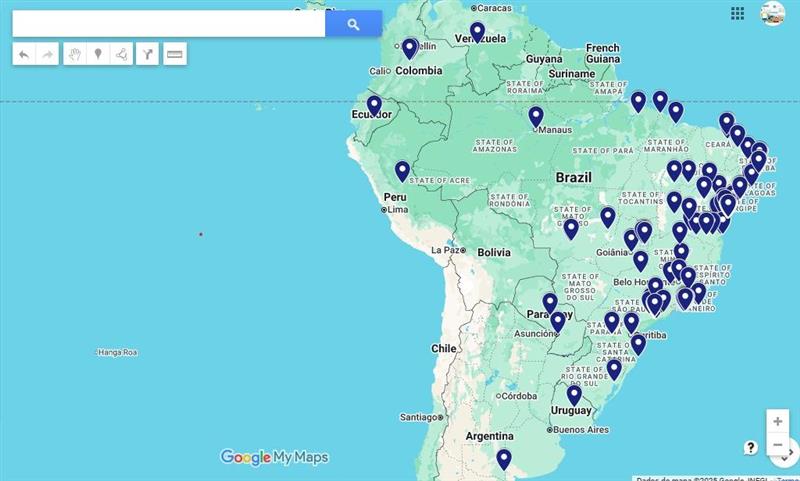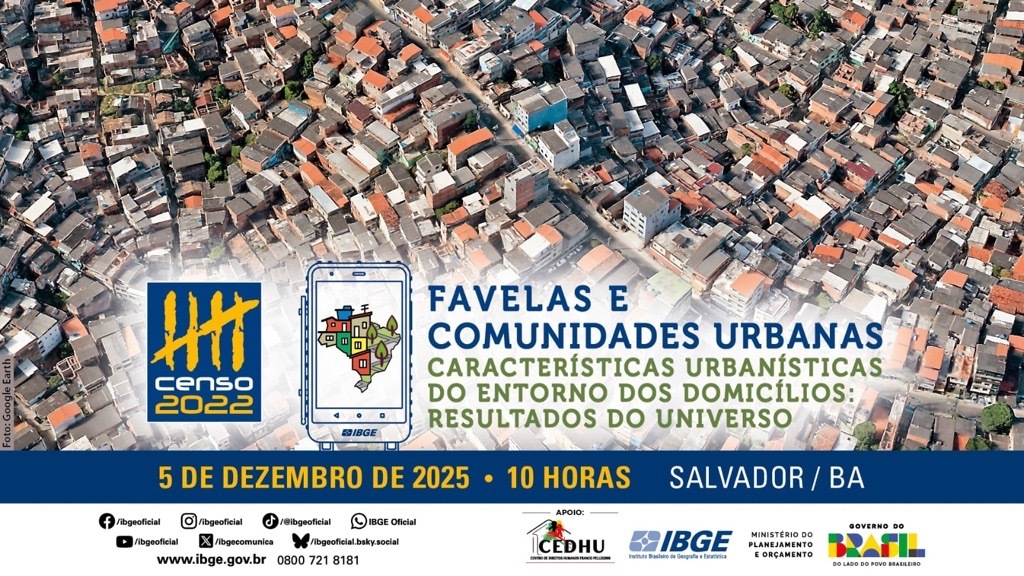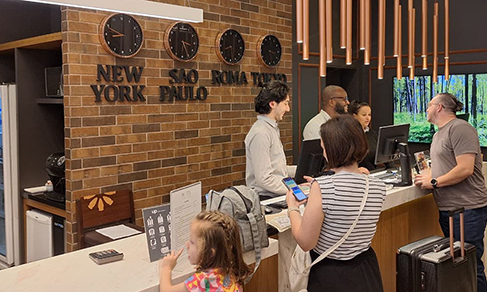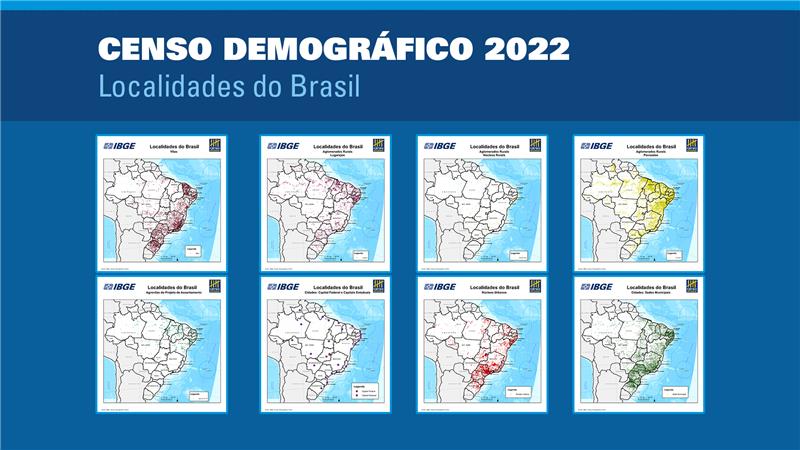2022 Census
With distribution advancing, IBGE is about to complete preparation of data collection devices for 2022 Census
April 18, 2022 02h30 PM | Last Updated: April 20, 2022 05h44 PM
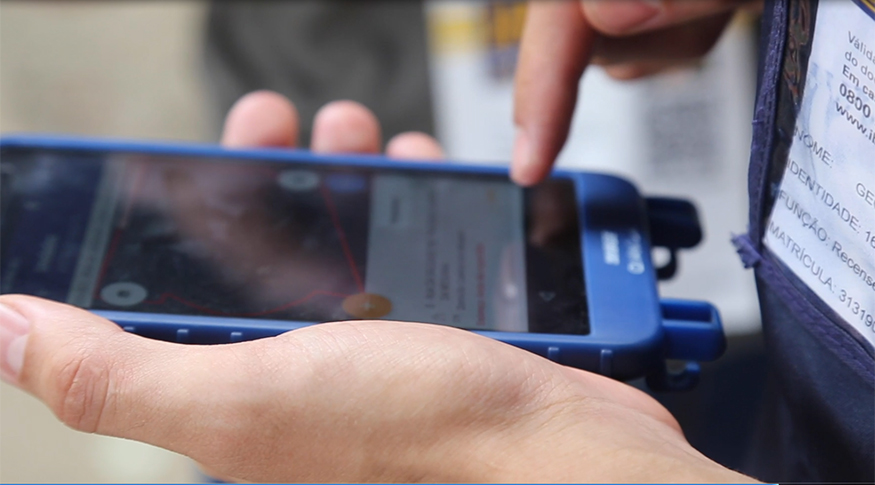
Slightly more than three months before the beginning of the data collection of the 2022 Population Census, most of the 27 State Units are about to close the configuration, preparation and testing of the 183,538 Data Collection Mobile Devices (DMCs), the smartphones that will be used by enumerators in the Census surveys. According to Bruno Gonçalves Santos, coordinator of Logistics and Information Technology Operations, all the equipment were sent to the UEs along 2020 up to April 2021 and their preparation began in September last year.
The DMCs will have a previous list of addresses and an intense use of geo-referenced systems, as well as 4G chips to directly transmit the information to the IBGE´s major Data Center in Rio de Janeiro. Enumerators can transmit from any place with WiFi connection whenever mobile networks are not available. During the data collection, teams in the UEs and in the headquarters, in Rio de Janeiro, can access the contents and possibly request an amendment, streamlining the data collection management.
Following the model adopted in the 2017 Census of Agriculture, the DMCs can have their software installed and can be configured remotely by means of the MDM (Mobile Device Management), which improves the census operation. Together with the MDM, every mobile device will receive a Kiosk module, a feature that blocks the installation and use of other applications (music, games, streaming) not related to the census operation.
Although the policy of application selection is centralized, the entire execution is decentralized in the UEs. The applications will be installed at each step of the 2022 Census - training, survey of the surroundings, data collection -, so every equipment is updated in a short time frame. It is easier for those closer to the DMCs to download software, control them and check whether the equipment is working.
“We released the MDM (Mobile Device Management) configuration module in September, allowing the remote management. It was the first phase of the preparation. Today, 85% of the DMCs completed this first phase,” explains Bruno Santos. “The State Units are installing the applications in order to meet the training chain. Nearly 3 thousand devices were prepared to train the teams with 500 professionals of the State Units. The goal is to complete the configuration up to June 1st, both with the training and data collection applications, in time to begin the training of municipal census agents, supervisor census agents and enumerators. And also to allow the distribution to the data collection stations and sub-areas,” says the coordinator.
The IBGE acquired more than 240 thousand smartphones for the 2022 Census, 99% of them already delivered to the State Units. The acquisition was centralized and they were delivered to every State Unit. Beyond the 183.5 thousand DMCs, the following equipment was also acquired:
- 898 laptops for data collection;
- 523 laptops for supervision (sub-area/area);
- 523 desktops for sub-areas;
- 715 desktops (administrative and technical areas);
- 584 tablets;
- 921 printers, still to be delivered;
- 480 broadband connections;
- 100 ADSL routers for data collection stations and 1,440 for sub-areas;
- 791 3G and 4G chips and mini-modems;
- 700 external batteries, with price registration for 13 thousand;
- 75 VSAT antennas;
- 225 BGAN antennas.
“The major challenge is the geography of the national territory. Each region has a peculiarity. There are states in which the distribution is made by plane; in the North Region, equipment is also distributed by boat. We have to consider this in order to have the entire equipment in all the areas before the deadline. When we made the bidding, we requested the delivery to the headquarters of every State Unit. It is the IBGE´s responsibility to send them from the headquarters to the interior of the states,” states Bruno Santos.
Francisco Lopes, head of the State Unit of Ceará, informs that the State Unit received 7,324 DMCs and 1,135 tablets, among other equipment. The DMCs already received the MDM software and the Kiosk module, and 63% of them already have the applications installed. Only 2.5% of the DMCs and 2.2% of the tablets needed to be formatted.
“We already have a distribution plan involving a truck that will deliver to every area by means of two routes. The notebooks are already being delivered to the sub-area coordinators. More than 60% of the DMCs are already ready and they will be distributed as soon as the installation is completed in April,” expects Lopes. “We are motivated and confident that everything will be ready until June 1st. The training of the ACSs and ACMs begins on June 6 and that of enumerators, in July. The data collection will begin on August 1st and finish on October 31. We will show the results in every municipality in November by means of the 2022 Census Planning and Monitoring Meetings,” warns the head of the IBGE in Ceará.
In the State Unit of Pará, 6,093 DMCs were received in 2021. In November, the configuration work began with a team of two information technology servants and six operational census agents. The head of the State Unit of Pará, Rony Helder Nogueira Cordeiro, informs that 75% of the devices (4,600 DMCs) are ready to be distributed to the branches. The remaining (25%) will be used exclusively in the capital branches and in the neighbor city of Ananindeua.
“We are the second largest state in Brazil in area, with branches distributed in the entire territory. The distribution logistics requires a thorough planning. That´s why we firstly need to prepare the DMCs of the interior branches. Another key point is the security of the DMCs during transportation and storage in the branches. Part of them will go in official vehicles, part through the mail company and part through river transportation. We should be very careful,” stresses Cordeiro.
Of the 4,600 DMCs, 680 were already distributed, being 200 to Santarém, 200 to Cametá, 200 to Redenção and 80 to Paragominas. Furthermore, the first step of the training chain of the multipliers for the 2022 Census has already begun. The DMCs selected for this training are working appropriately. “In our planning, we expect to complete the configuration of the DMCs until April 20 and the distribution is underway and should be finished in May,” informs Cordeiro.
The State Unit of Tocantins received 1,307 DMCs in May 2021 still under the effect of the pandemic, requiring an escalation into five parts in order to meet the Census demand and health protocols. The head of the UE-TO, Paulo Ricardo da Silva Amaral Jesus, informs that 80% of the devices (1,043 units) were delivered to the branches in the interior. “Aiming at rationalizing costs, we sent the equipment through the servants who participated in the first step of the training chain. We are absolutely confident that all the devices will be ready for the beginning of the 2022 Census,” says Jesus.
In Santa Catarina, 99% of the DMCs are already ready for the census operation and 35% have already been distributed. According to the head of the State Unit, Roberto Kern, the strategy is to use the logistics of the training to distribute them.
“The areas come to the headquarters to the centralized training and, as soon as they return to their areas, they take the equipment. We expect to distribute 100% of the DMCs in the coming weeks. The expectation in terms of IT equipment is very good. We believe that we will not face difficulties, the devices were tested and did not show major problems,” concludes Kern.




